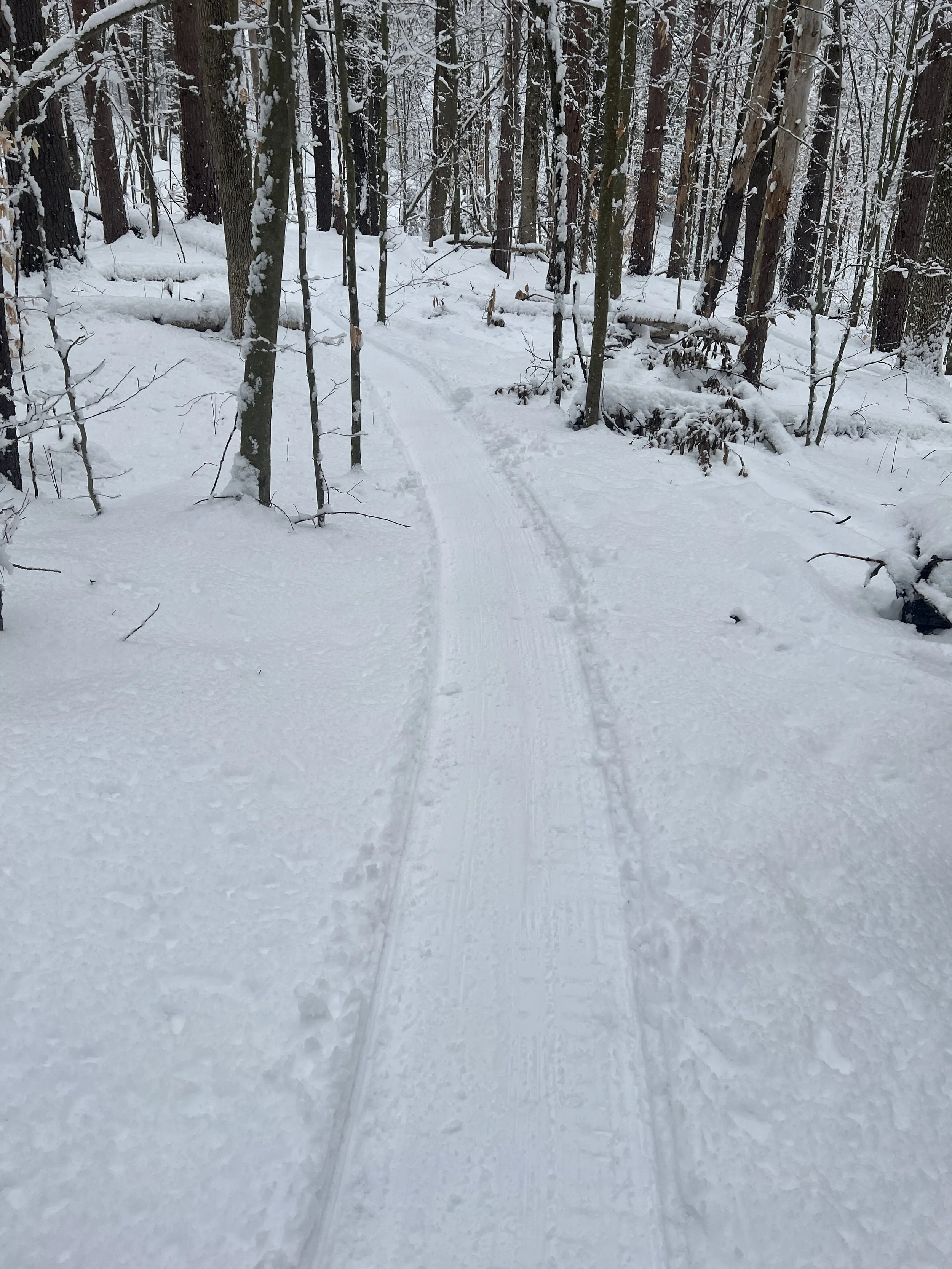People and wildlife continue to share Perry Hill trails in winter
Feb. 26, 2023 | By Waterbury Roundabout A groomed winter trail on Perry Hill. Photo by Noah Tautfest at Bicycle Express
Efforts to manage human winter activities like cross-country skiing, fat biking and snowshoeing in the Perry Hill recreation area that’s also an important deer habitat are going well, according to state officials who have been paying close attention the past several years.
A pilot program that began in 2021 continues this winter involving the state Department of Forests, Parks, and Recreation, the town of Waterbury and the Waterbury Area Trails Alliance to help people and wildlife share the Perry Hill recreation section of Putnam State Forest. The aim is to minimize harm from winter trail use in an important deer wintering area while keeping the trails and forest accessible for popular human winter recreation activities.
The program establishes two use zones at Perry Hill: a designated winter recreation zone and a designated deer wintering zone. Fat biking, snowshoeing, and cross-country skiing are allowed on select trails in the winter recreation zone, with particular attention given to providing favorable trail conditions for the activities. Trail use is not allowed in the deer wintering zone which is identified by signs in the section. Simple pedestrian recreation, however, is not restricted.
The program’s objectives and user ethics are explained on interpretive panels at the trailhead kiosk and people appear to be complying with the goals.
“Since the beginning of this pilot program, the public has responded positively to this opportunity, and we are seeing the outcomes we were hoping for. Therefore, we are pleased to continue offering winter hiking and fat biking opportunities at Perry Hill. We look forward to another successful winter,” says Becca Washburn, Director of Lands Administration and Recreation at the Vermont Department of Forests, Parks, and Recreation.
Wildlife experts explain that deer wintering areas are important habitat for deer and other species. During winter months, deer survive on fat reserves. Wintering areas provide consistent, dense evergreen canopy cover which reduces snow depth and provides shelter, thereby minimizing energy demand on deer.
Human trail users are asked to stick to trail corridors along Main Climb, Campfire, S’Mores, Joe’s, Six Flags, and Scotch Tape trails. The parking area is at the Perry Hill trailhead on River Road. Overflow parking is at the Ice Center. Map courtesy Vt. Forests, Parks & Recreation Department
Increasing recreational use of the Perry Hill trail area in wintertime prompted the state forest officials along with Vermont Fish and Wildlife Department experts to design the pilot program to protect the functional deer wintering area there.
State Forest Recreation Specialist Walter Opuszynski said that data from 2021 and 2022 show human use of the parcel largely focused within the area being managed for winter recreation.
The nonprofit Waterbury Area Trails Alliance helps manage the trails at Perry Hill with signage, public information, and trail grooming. The local outdoor gear shop Bicycle Express is assisting with trail grooming and data collection.
John Duston, WATA’s program director, said it’s rewarding to see the community following the guidance the program promotes.
State staffers working on the project along with trail group members have established guidelines for user behavior and ethics. That, along with information about the management objectives, is explained on interpretive panels at the trailhead kiosk.
Main messages are for people to respect the established deer wintering zone by staying on groomed trails and not using the trails if breaking through the surface more than one inch.
Users are directed to focus recreation activity on trail corridors highlighted on a map: Main Climb, Campfire, S’Mores, Joe’s, Six Flags, and Scotch Tape. In addition, dogs should be leashed or left at home because they may chase wildlife and cause additional stress to deer during a very vulnerable time of year.
Complete details can be found online on the trail alliance website.
State officials say they will continue to monitor trail use data with the aim to continue the program, emphasizing that the key for long-term success is users complying with guidelines.


